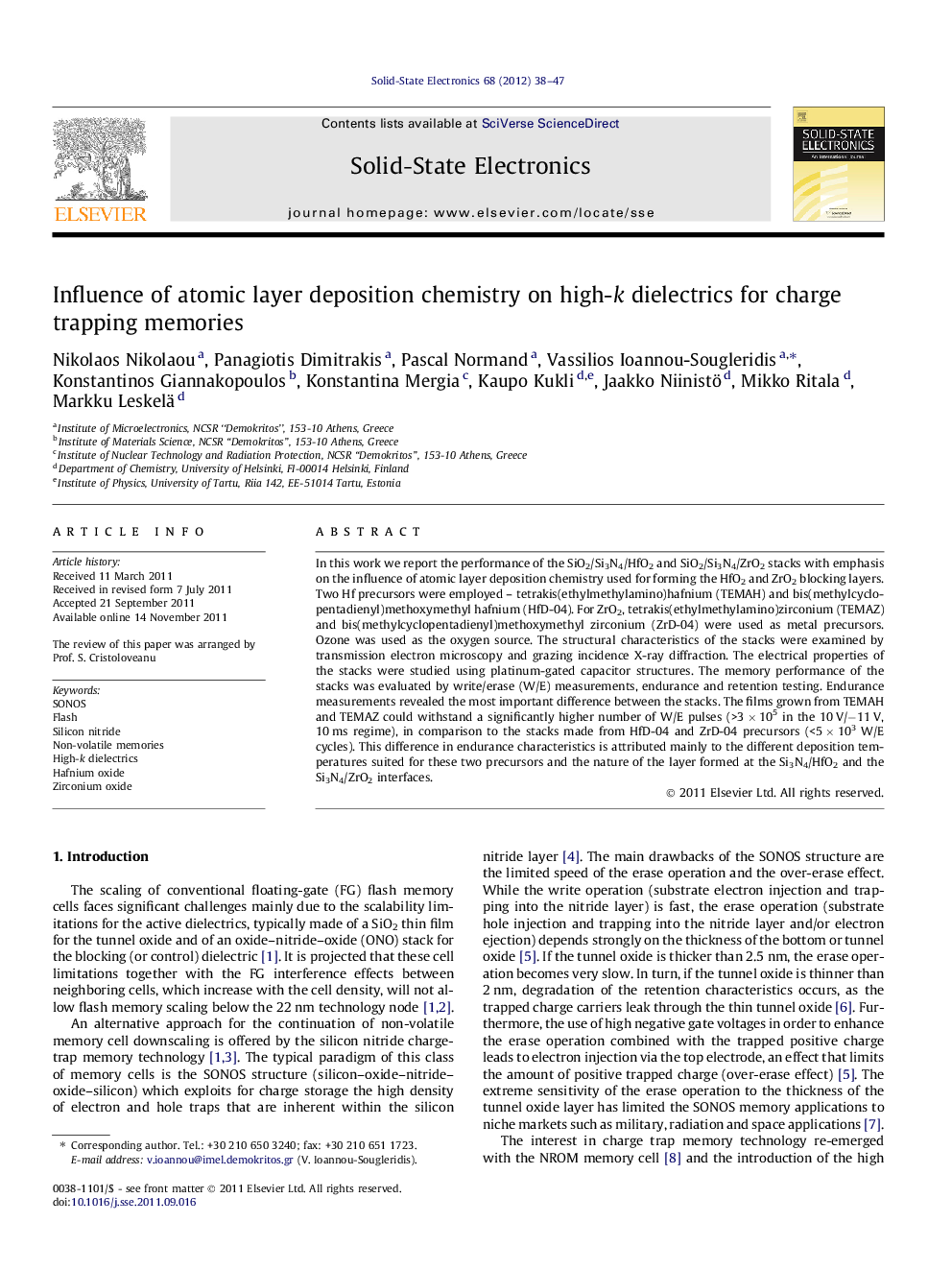| Article ID | Journal | Published Year | Pages | File Type |
|---|---|---|---|---|
| 752992 | Solid-State Electronics | 2012 | 10 Pages |
In this work we report the performance of the SiO2/Si3N4/HfO2 and SiO2/Si3N4/ZrO2 stacks with emphasis on the influence of atomic layer deposition chemistry used for forming the HfO2 and ZrO2 blocking layers. Two Hf precursors were employed – tetrakis(ethylmethylamino)hafnium (TEMAH) and bis(methylcyclopentadienyl)methoxymethyl hafnium (HfD-04). For ZrO2, tetrakis(ethylmethylamino)zirconium (TEMAZ) and bis(methylcyclopentadienyl)methoxymethyl zirconium (ZrD-04) were used as metal precursors. Ozone was used as the oxygen source. The structural characteristics of the stacks were examined by transmission electron microscopy and grazing incidence X-ray diffraction. The electrical properties of the stacks were studied using platinum-gated capacitor structures. The memory performance of the stacks was evaluated by write/erase (W/E) measurements, endurance and retention testing. Endurance measurements revealed the most important difference between the stacks. The films grown from TEMAH and TEMAZ could withstand a significantly higher number of W/E pulses (>3 × 105 in the 10 V/−11 V, 10 ms regime), in comparison to the stacks made from HfD-04 and ZrD-04 precursors (<5 × 103 W/E cycles). This difference in endurance characteristics is attributed mainly to the different deposition temperatures suited for these two precursors and the nature of the layer formed at the Si3N4/HfO2 and the Si3N4/ZrO2 interfaces.
► ALD deposited HfO2 and ZrO2 materials as blocking oxides in nitride charge trap memories. ► Emphasis on ALD precursor chemistry, alkylamides vs. cyclopentadienyls. ► Evaluation of SiO2/Si3N4/high-k stacks for memory applications. ► Alkylamide-based-high-k materials exhibit the best endurance to W/E cycling (>1E5 cycles).
